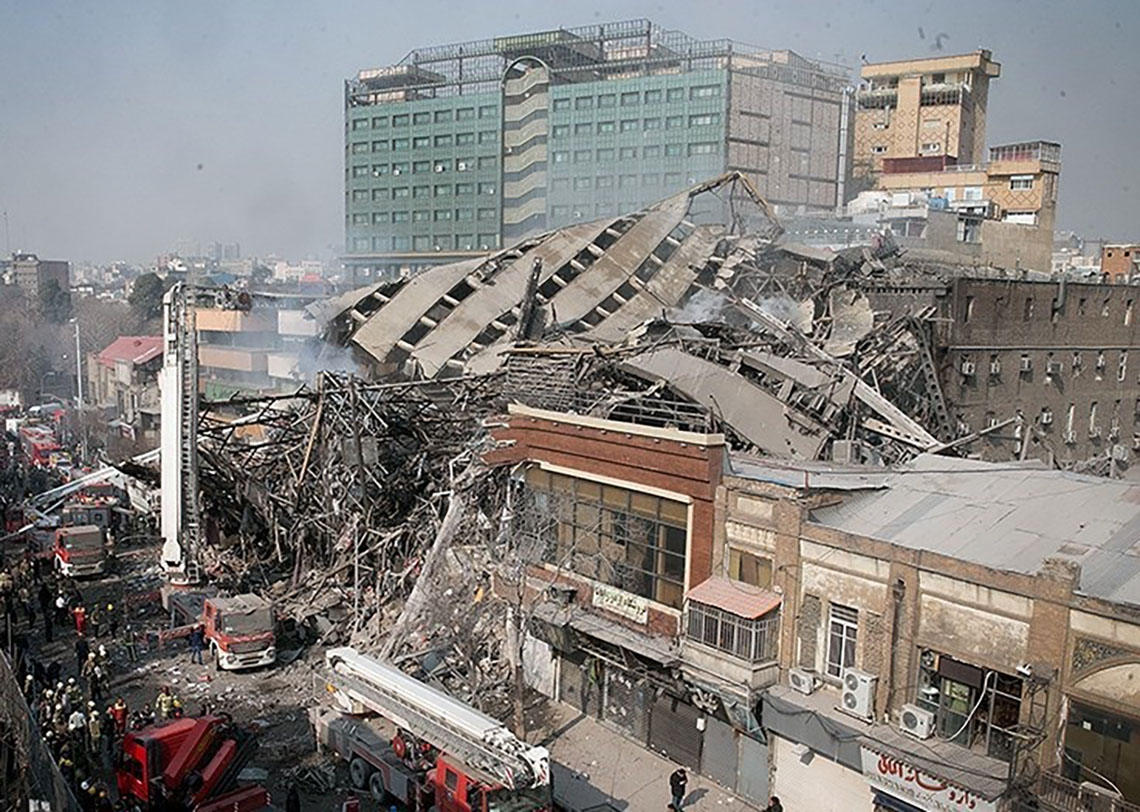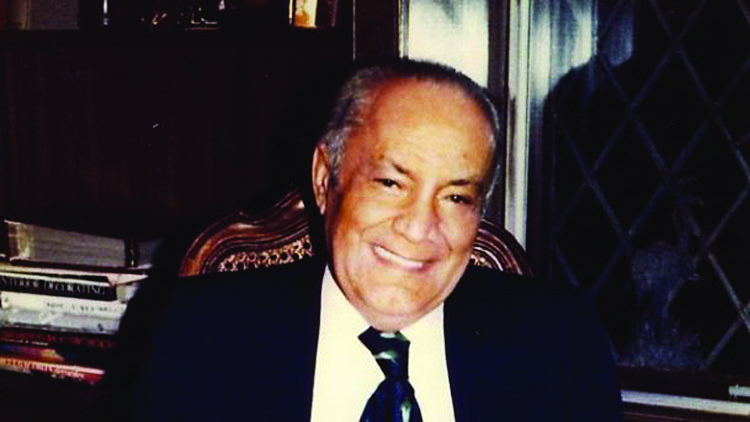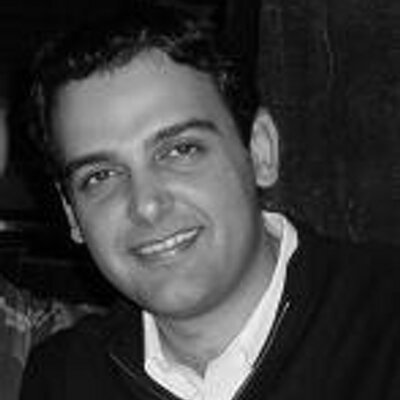
For many Iranian-American Jews, the fire in and collapse of the historic Plasco Building in Tehran on Jan. 19 was a tragedy many times over.
The heartbreak comes not only from the loss of 75 innocent lives who tried to fight the fire or were trapped in the building; the building’s demise also rekindled the painful memories of the unjust execution of Habib Elghanian, the Jewish community leader who originally built the structure. The Plasco Building was one of the remaining symbols of the Jewish community’s height of success in Iran during its modern “golden age.” Not to acknowledge the Elghanian family’s role in this building’s creation and the tragedy that befell Habib Elghanian at the hands of the Iranian regime is also a travesty.
Media outlets worldwide have not extensively acknowledged the important role of the Elghanian family in the Plasco Building’s creation or only briefly mentioned Habib Elghanian’s name in passing. Elghanian and his brothers were among the most affluent and successful Jewish businessmen in Iran before the 1979 Iranian Revolution. They not only imported an array of goods from the West into the Iranian market and expanded infrastructure but also brought new technologies to Iran that helped the country manufacture its own goods and, as a result, helped employ thousands of Iranians in their businesses. The Elghanian family was equally generous in giving back to countless needy causes in Iran, Jewish and non-Jewish.
The Plasco Building, completed in 1962 and standing 17 stories, was the first privately built “high rise” of the modern era created in Iran. It was also the first modern “mall” of that early era in Iran, with floors that were home to many new stores for various goods and services. The Plasco Building was elegant and modern in design and structure for its time, and a huge departure from the ancient slum-like “bazaars” of Iran’s past where people typically went to buy their goods. At a time when Iran was beginning to modernize, the building was a powerful symbol of both the country’s positive transformation and the immense achievement of Iranian Jews.
It was likewise a symbol of great pride for Iranian Jews who, just four decades before, had been forced by the Qajar kings of Iran to live in poverty and in run-down ghettos.
“Jews were proud, of course, that a Jewish person had built this iconic building, but many elders in the community were apprehensive about its implications and the much expected backlash by Muslims, envious of Jewish accomplishments,” Frank Nikbakht, an Iranian-Jewish activist living in Los Angeles, told me this week.
Jewish community leaders in Iran worried about the Plasco Building’s backlash because, according to Shahrzad Elghanayan, Habib Elghanian’s granddaughter, Iranian Shiite cleric Mahmoud Taleghani “objected to the idea that a Jew had built the tallest building of its time in Iran.” No doubt Taleghani, Ayatollah Ruhollah Khomeini and other Shiite clerics were furious at the Pahlavi kings, who had created an environment of co-existence and tolerance among Muslims and non-Muslims in Iran. The late Shah of Iran and his father had essentially set aside the old Islamic Shariah laws, which were designed to impose or ensure superiority of Muslims over Jews or other “infidels.” The Plasco Building, built and owned by a Jew, was a direct slap in the face to that radical Islamic dogma at the time because the notion of a Jewish building being taller in size than Muslim-owned buildings was a totally unacceptable notion for the fanatic Iranian religious clerics.
When Elghanian was executed, the news spread like wildfire among Iran’s 80,000-strong Jewish community and sparked the first massive wave of Jews fleeing the country.
Those fears turned out to be prescient. On May 9, 1979, Elghanian was executed by a firing squad of the Iranian Revolutionary Guard after being accused on trumped-up charges of spying for Israel and the United States. Elghanian first was given a 20-minute sham trial in front of the Iranian Revolution Court and TV cameras, but never was allowed to consult with an attorney, nor any chance to defend himself from the baseless charges. When Elghanian was executed, the news spread like wildfire among Iran’s 80,000-strong Jewish community and sparked the first massive wave of Jews fleeing the country. On that disastrous day, the lives of Iran’s Jews were forever transformed for the worse. It was then that they realized when their beloved community leader could be so easily executed with no real evidence, they too were no longer safe in a country where they had lived for nearly 3,000 years.
In 2009, on the 30th anniversary of his execution, I had the unique opportunity to interview Elghanian family members, Iranian-Jewish leaders and Iranian Muslims who knew Habib Elghanian well and who recalled their memories of his imprisonment and execution. One of the most revealing interviews I had was with Sion Elghanian, Habib Elghanian’s brother, who told me that Habib had left Iran during the initial chaos of the revolution but then returned to Iran because of his patriotism and commitment to Iran’s Jews as their leader.
“We all begged him not to go back to Iran — including Israeli Prime Minister Begin, because we all knew the new regime would execute him if he returned,” Sion Elghanian said. “He said, ‘I have done nothing wrong for them to execute me. I’ve created jobs and businesses to help the country grow and helped many Iranians of all faiths. Why should they kill me?’ ”
Sion revealed his family had made plans to bribe officials to help Habib escape the prison and country, but Habib refused to go along with the plans.
“He told us he would not go along with the plan to escape because if he did, the Iranian regime would take revenge by executing Jews in Iran. In this way, he sacrificed his life for the community.”
Another revealing interview was of an Iranian-Muslim businessman named Nasser Oliae, who was a longtime Elghanian friend and had nothing but praise for him. “One day they must create a giant statue of Habib Elghanian in the middle of Tehran for all of the great things he did for that country! He brought the plastics manufacturing industry to Iran, he hired thousands of people, he gave generously to thousands of Iranians of all religions who were needy. He was a man who truly loved Iran and wanted to see the country’s success,” Oliae said.

Habib Elghanian was an innocent Jew who was executed for no reason by the evil Iranian regime, and that regime still has not apologized to Iranian Jewry for this injustice.
Elghanian family members sold the building in 1975 to Hojabr Yazdani, an affluent Iranian-Baha’i businessman. After the revolution, the Iranian regime’s official “nonprofit” organization, called Bonyad-e Mostaz-afaan, confiscated the Plasco Building from Yazdani in 1979, and has been operating it since then. Bonyad-e Mostaz-afaan, which translates to “organization for the oppressed people,” was a front established by the Iranian regime’s ayatollahs after the 1979 Revolution to expropriate the assets of any person who they believed was an “infidel” in order to allegedly “redistribute” it to the poor or needy in Iran. Unfortunately for Iran’s poor, the Bonyad-e Mostaz-afaan has in the past 38 years never given a penny to them. Instead, the money and assets this group has confiscated over the years from Jews, Muslims, Christians and Baha’is have all gone into the pockets of the ruling Iranian ayatollahs. All of the Elghanian family assets and properties were also confiscated by the Bonyad-e Mostaz-afaan.
What is truly unfortunate about the recent Plasco Building fire was the fact that, since it was owned by the Iranian regime, no one will be brought to justice for the failure to upkeep the building and prevent the fire hazards that brought it down. We will never know what caused the fire or explosion that destroyed this iconic building in Tehran, and sadly, the ayatollahs who profited from the building for the past 38 years will never be held accountable for the fire code violations that resulted in the loss of so many innocent lives.
In the end, the Plasco Building fire disaster not only caused the death of many individuals but the loss of one of the remaining symbols of Jewish contributions to Iran during the 20th century. The building was also a symbol of the bygone era of modernity and new development that an Iranian Jew named Habib Elghanian and his brothers brought to Iran. Today, we cannot forget the calamity that befell Habib Elghanian at the hands of the current Iranian regime, nor can we forget the tremendous contributions thousands of Iranian Jews made to the betterment of the nation of Iran during the 20th century.























 More news and opinions than at a Shabbat dinner, right in your inbox.
More news and opinions than at a Shabbat dinner, right in your inbox.